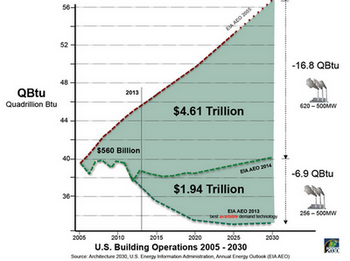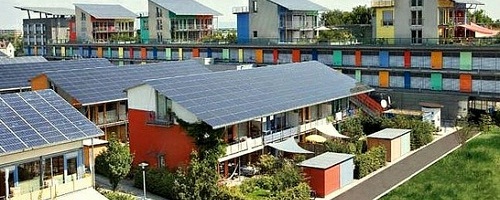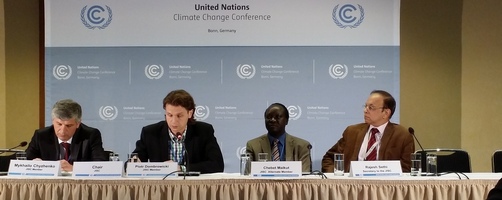|
GOING NET ZERO - FOCUS ON THE FINAL BENEFIT, GET THERE FASTER

A strong message emerged from a Chatham House side event on June 12: achieving global zero net emissions is a goal everyone can understand and act on in ways that make sense, bring each actor clear benefits, and deliver faster results than expected. "The attraction of zero net is that you can understand it and communicate how to get there" said Stefan Raubenheimer from the MAPS programme.
The trick is to identify practical, accessible and easily understandable methods that can be applied at all levels by all sides - policy makers, planners, investors, producers and public - and that lead to a final concrete set of benefits, such as economic, health, resilience, infrastructure and energy security. The approach requires commitment at every level, but it is easier to get that buy in when each side sees the benefit of sticking to a long-term plan that makes sense in the real world in which they live and work. This is where clear, consistent policy setting and direction is essential to ensure all sides can be confident to plan, invest in and produce the supply of materials and inputs to a zero emissions strategy in advance of the new demand generated, said Thomas Boermans of Ecofys.
Edward Mazria of Architecture 2030 highlighted such an approach in the building sector. By 2030, it is estimated that the world will construct new buildings or replace old ones equal to about 60% of the entire current stock, which need to be brought down to zero emissions as soon as possible to avoid locking in current emission levels for at least another 80 years. Mr Mazria noted the success in the US building sector over the past decade due to a coordinated set of federal laws matched by incentives and ambitious commitments by states, cities and industry. "Even though we are adding more buildings, we have already peaked in energy consumption. This has saved American consumers USD 560 billion of what they would have spent on energy" he said. The following graph illustrates the impact of coordinated action and past and future savings in US building operations.

Powering green cities of tomorrow

A side event 'Powering the Green City of Tomorrow: Efficient, Renewable Affordable' was held 12 June in Bonn. The event showcased a number of existing climate solutions which can help cities move from conventional development to cleaner, sustainable and more resilient growth.
Nick Nuttall, UNFCCC Communications Coordinator, opened the event by saying that the role of urban centres in the fight against climate change was increasingly coming to the fore and had become an integral part of efforts under the UNFCCC to increase pre-2020 ambition and to build a meaningful 2015 climate agreement.
Ruud Kempener of the International Renewable Energy Agency (IRENA) summed up the key findings of a recent IRENA report according to which the global percentage of renewable energy could be more than doubled to 36% by the year 2030. Together with energy efficiency, renewables are instrumental in keeping the world below a maximum two degrees Celsius temperature rise. Most of the renewable installations and energy efficiency measures of the future, notably the better insulation of buildings, will be in urban centres.
John Christensen of UNEP's Riso Centre presented a key initiative of the UN's Sustainable Energy for All initiative, the Energy Efficiency Accelerator Platform. An excellent example of low cost, efficient technology with major mitigation potential is energy efficient lighting. Such technology alone can reduce global electricity demand for lighting by more than 32%, avoid 3.5 Gt of CO2 and save over USD 108 billion annually in avoided electricity bills to consumers.
Maryke Van Staden of the global cities network ICLEI is advising numerous municipalities and the EU Commission on how to improve the greening of public services. She said that the potential for green public procurement is presently hugely underestimated. One example is the UK's National Health Service, which has begun systematically procuring climate friendly products, thereby helping to green the UK's national and municipal supply chains.
Joint Implementation tool too good to waste

The mechanism under the Kyoto Protocol is one of the few tools that countries have at their disposal to incentivize and focus private sector investment where it is needed to address climate change. Thus it makes sense to enhance and make good use of the mechanism.
This was the message delivered by the Chair of the Joint Implementation Supervisory Committee (JISC), Piotr Dombrowicki, at a stakeholder question-and-answer session held on Thursday. The JISC Chair presented on the status of JI, which is suffering from low demand and resulting low prices paid for the emission reduction units created by JI emission reduction/limitation projects.
Importantly, attendees learned about the improvements proposed for JI, and which are ultimately in the hands of Parties. These include a proposal to create a single unified process for vetting and approving JI projects under an international body (currently countries can opt to set and administer their own JI rules), as well as a proposal to cooperate with the other Kyoto Protocol mechanism, the Clean Development Mechanism, in accrediting the entities that vet projects and ensure real emission reductions.
 View webcast View webcast
Doing our homework: Preparations to inform national contributions in Latin America and South Africa
University of Cape Town (UCT)

On Thursday, the University of Cape Town, or UCT, hosted a side event that presented a Mitigation Action Plans & Scenarios (MAPS) process used in Latin America and South Africa to understand the socioeconomic effects of implementing various climate actions. The MAPS process is a south-south collaboration that involves government, society and experts to explore the best way forward for both national development and the climate.
MAPS analysis currently underway in Peru, Chile, Brazil, Colombia and South Africa is possible through the partnership of universities and institutions. The goal is to build tailored Intended Nationally Determined Contributions for the coming new, universal climate change agreement that put each country on track to curbing emissions while promoting positive outcomes in social and economic development.
In Chile, where the government has committed to a USD 5 per tonne tax on carbon, the MAPS analysis is being used to compare different levels of carbon taxation. Using a sectoral approach that examines power needs for major economic drivers, the analysis looks at the effect of taxing emissions at various levels in the period 2017 to 2030. The results show emissions are curbed at a tax of USD 40, but GDP is adversely affected in the short term if that level of taxation is implemented. Using MAPS analysis, Chile can balance carbon tax levels and country-wide economic output.
South Africa is using this analysis to combine existing models to evaluate three scenarios: business-as-usual, ambitious renewable energy installation, and a USD 7 carbon tax that increases 10% per year. Researchers in Cape Town found that while the tax is the best option for GDP, a massive shift to renewables provides the highest potential for emissions reduction. This knowledge can be useful for the government to choose a policy path at the national level and bring that policy outlook to the international climate talks.
These are just two examples of how this analysis is being put to work in Africa and Latin America. MAPS methodology is significant because it is an instrument for developing country governments to use to meet both poverty eradication and climate change goals, which are often seen as competing goals. For more information on this exciting programme, please visit their website.
|